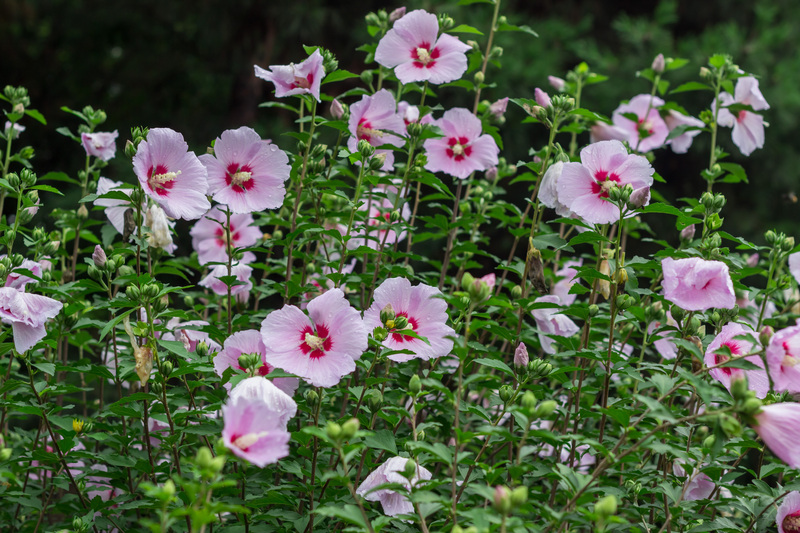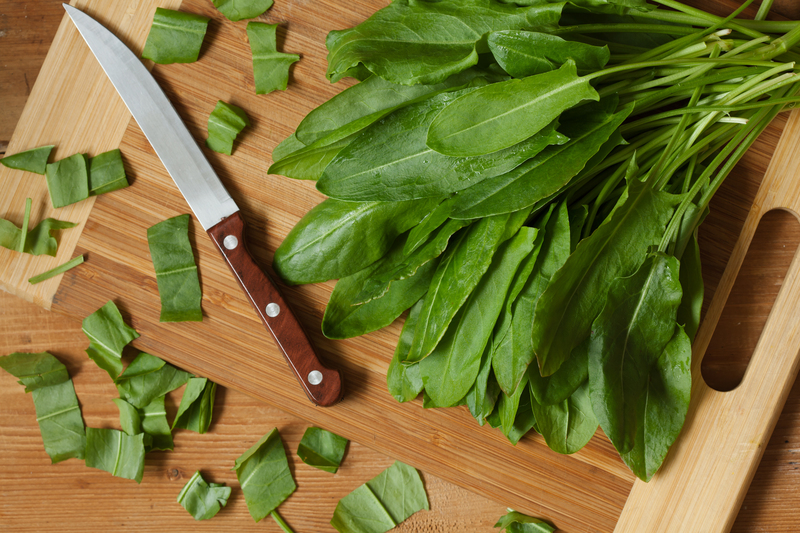Developing a Play-Safe Garden Environment for Children
Posted on 03/09/2025
Developing a Play-Safe Garden Environment for Children
Creating a safe outdoor space for kids is a top priority for parents, caregivers, and child-focused organizations. With gardens serving as both play areas and educational environments, it is crucial to design a child-friendly garden that prioritizes safety without compromising on fun or imaginative play. This comprehensive guide will walk you through the essential steps and considerations for developing a play-safe garden environment for children, so you can foster outdoor exploration, healthy activity, and joyful childhood memories.
Understanding the Importance of a Safe Child-Friendly Garden
A garden is more than just a patch of greenery; it's an arena for learning, discovery, and socialization. However, the dynamic features that make gardens appealing--such as plants, water, rocks, and tools--can also pose threats when unmanaged. Developing a play-safe garden environment for children helps protect young kids from preventable accidents, encourages curiosity, and offers parents peace of mind.
- Accident Prevention: A well-planned garden layout reduces falls, trips, and contact with hazardous items.
- Skill Development: Safe gardens promote independent play, fine and gross motor skill development, and nature-based learning.
- Health & Wellbeing: Outdoor play is linked to improved mental, physical, and emotional health in children.

Key Principles for Designing a Safe Children's Garden
Whether upgrading an existing space or starting from scratch, incorporate these foundational principles to ensure your garden is both safe and inspiring for children of all ages.
1. Age-Appropriate Design
- Toddlers: Favor soft surfaces, gently sloping paths, and fenced play spaces with minimal hazards.
- Preschoolers: Consider sensory gardens, sand pits, and low-level climbing features with protective surfacing.
- School-age Children: Introduce more challenging activities such as nature trails, raised beds, and complex play equipment with sturdy guidelines.
2. Safety by Design
- Good Visibility: Arrange plantings and structures to avoid blind spots. Caregivers should have clear sight lines to all areas of the garden.
- Sturdy Boundaries: Use fencing and natural hedges to define the garden perimeter, keeping children away from streets or neighboring properties.
- Non-toxic Materials: Choose materials and plants that are safe if touched or accidentally ingested. Avoid treated timbers, lead-based paints, and sharp-edged surfaces.
Essential Steps in Developing a Play-Safe Garden Environment for Children
1. Landscape Planning and Risk Assessment
Before beginning any project, conduct a thorough risk assessment of the garden area:
- Identify existing hazards such as uneven ground, sharp tools, exposed wires, or thorny plants.
- Assess proximity to driveways, water bodies, or hazardous outbuildings.
- Mark zones for active play, quiet relaxation, planting, and supervision points.
Integrating these findings into your landscape plan ensures the foundation for a child-safe outdoor environment.
2. Choosing Safe and Stimulating Playground Surfaces
Surface choice can make a significant difference in minimizing injuries. Consider the following options:
- Bark Chips or Mulch: Provides cushioning for falls, is natural, and blends well with garden settings.
- Artificial Grass or Turf: Soft, even, and suitable for high-traffic play areas, with the benefit of remaining mud-free.
- Rubber Tiles or Mats: Highly shock-absorbent and easy to clean, though best used in combination with greener areas.
- Natural Grass: Cool, eco-friendly, and attractive, but may require maintenance and care to avoid tripping on uneven spots.
3. Selecting Child-Safe Plants
A play-safe garden is incomplete without vibrant, sensory-rich plantings. However, some plants may be toxic or prickly:
- Favorite Non-Toxic Choices: Sunflowers, snapdragons, marigolds, and strawberries are safe, easy to grow, and encourage interaction.
- Plants to Evade: Avoid including foxglove, oleander, daffodils, yew, and nightshades--these can be poisonous if ingested.
- Edible Varieties: Small herb patches or raised vegetable beds introduce children to gardening and healthy eating in a safe environment.
4. Implementing Secure Boundaries and Entry Points
Fencing should be both solid and attractive:
- Opt for non-climbable fencing at an age-appropriate height.
- Add self-closing, self-latching gates that are out of reach of small children.
- Utilize natural hedges for soft borders while avoiding species with thorns, berries, or toxic foliage.
5. Installing Safe Playground Equipment
Play equipment sparks imagination but poses risks if poorly maintained or unsuited to the age group. For a safe play area in your garden:
- Install equipment according to manufacturer guidelines, anchoring firmly and periodically checking for wear or loose bolts.
- Maintain adequate fall zones--no hard surfaces or objects should be within two meters of play structures.
- Regularly inspect for splinters, rust, or sharp edges that could cause harm.
6. Utilizing Shaded Areas
Sun safety is as important as physical safety. Children have sensitive skin and should be protected from excessive sun exposure:
- Plant fast-growing trees or install shade sails and pergolas over main play zones.
- Use UV-protective materials for covered areas.
- Consider positioning playtime during gentler sunlight hours (morning or late afternoon).
7. Incorporating Safe Water Features
While water stimulates sensory play and observation (such as bird baths or small ponds), it must be safely managed:
- Secure all water features with rigid mesh covers or surround with fencing.
- Prefer shallow, pebble-based streams or splash pads over deeper water sources.
- Never leave children unsupervised near water (even shallow features can be dangerous).
8. Removing or Managing Garden Hazards
Constant vigilance is key to maintaining a play-safe environment:
- Store garden chemicals, tools, and fertilizers in a locked shed or cabinet, far from children's reach.
- Repair broken paving, loose steps, or protruding nails swiftly.
- Check for and remove animal waste, sharp litter, or insect hives regularly.
Encouraging Creative and Educational Play
Once your play-safe garden for children is established, enrich the space with features that inspire active, exploratory play:
Sensory Garden Spaces
- Plant aromatic herbs (such as mint, rosemary, lavender).
- Add textured leaf plants, smooth stepping stones, or splash-friendly areas.
- Encourage feeling, smelling, and quietly observing nature.
Edible Gardens and Gardening Activities
- Create raised beds or child-height planters for growing vegetables and berries.
- Engage children in planting, watering, and harvesting routines.
Natural Play Structures
- Build willow dens, tipi tents, or fairy gardens from natural, untreated materials.
- Arrange stumps or logs for balancing, climbing, and imaginative games.
Wildlife Features
- Introduce bug hotels, butterfly-friendly flowers, or bird feeders (ensure children cannot access harmful seeds or peanuts).
- Teach respectful wildlife observation and gentle interaction.
Supervising and Involving Children in Garden Safety
No matter how well-designed your child-friendly garden is, active supervision remains vital.
- Position seating for adults within easy view of all play areas.
- Maintain open communication about garden rules ("no climbing fences," "ask before picking plants," etc.).
- Empower children by involving them in safety checks and clean-up routines.

Maintenance: Keeping Your Garden Safe Year-Round
The process of developing a play-safe garden environment for children is ongoing. Seasonal maintenance is key to lasting safety and enjoyment.
Monthly Maintenance Tips
- Inspect fences, gates, and locks for stability.
- Replace worn shock-absorbing surfaces as needed.
- Weed poisonous or unwanted plants immediately.
- Trim overhanging branches and remove fallen debris.
- Review and upgrade play equipment and features in advance of winter and summer weather extremes.
Conclusion: Reap the Benefits of a Play-Safe Garden Environment for Children
A well-thought-out play-safe garden empowers children to experience the outdoors joyfully and confidently. Incorporating the guidelines listed here ensures your child-safe garden balances creative exploration with robust accident protection. By combining sensible risk assessment, age-appropriate design, regular maintenance, and active supervision, you can foster the best possible environment for your young adventurers--one that nurtures play, discovery, and a lifelong love for nature.
Ready to transform your outdoor space into the ultimate play-safe haven? Start planning today and let your children's garden adventures flourish--safely and happily!

